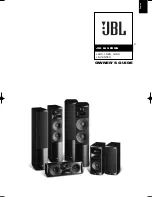
TFP485
Page 11 of 14
• SYSTEM RELEASED
The red SYSTEM RELEASED LED
turns on steady when the RAC cir-
cuit is activated. Activation of the
RAC circuit energizes the Solenoid
Valve to permit water to enter the
sprinkler system piping. RAC1 is
utilized, and RAC2 is spare.
• EARTH FAULT
The yellow Earth Fault LED turns on
steady when there is a wiring fault
from circuit to Earth.
• LAMP TEST
A lamp (LED) test can be per-
formed by pressing and holding the
ACCEPT SIGNAL key for a duration
of five seconds. Performing a lamp
test lights all LEDs on the system
and allows verification that all sys-
tem LEDs are functioning.
KEYS
• ACCEPT SIGNAL
The system LEDs (ALARM, SUPER-
VISORY, and TROUBLE) flash to
indicate the presence of an unac-
cepted alarm, supervisory, or trou-
ble condition somewhere in the
system. The ACCEPT SIGNAL key
acknowledges the presence of an
alarm, supervisory, or trouble con-
dition. By momentarily pressing the
ACCEPT SIGNAL key, the flash-
ing LED turns steady. The ACCEPT
SIGNAL key is used to acknowl-
edge every abnormal status present
in the system. For example, if there
are two red alarms and three yel-
low troubles, the ACCEPT SIGNAL
key must be pressed five times. The
panel’s tone-alert (piezo) turns off
when all abnormal conditions are
accepted.
• SIGNAL SILENCE
Pressing the SIGNAL SILENCE key
silences the audible notification
devices (horns). The yellow Alarm
Silenced LED lights to indicate that
an alarm is still active even if the
audible alarms have been silenced.
• SYSTEM RESET
Pressing the SYSTEM RESET
key directs the panel to reset
all attached devices and clear
all accepted alarms, troubles,
and supervisory conditions. All
alarms must first be accepted via
the ACCEPT SIGNAL key and all
devices must be reset (normal sys-
tem air pressure re-established).
Note: After pressing the SYSTEM
RESET key, the panel requires approx-
imately fifteen seconds to clear.
Operation
The system is automatically maintained
at a normal system air pressure of 10
to 14 psi (0,7 to 1,0 bar) via the Air
Compressor. In the standby condition,
water is prevented from entering the
system piping until the Solenoid Valve
in the Manifold Assembly is opened in
response to the electronic control.
Operation sequence:
• The normal standby condition is AC
green light ON.
• Closure of Main Control Valve,
closure of System Control Valve, or
a high system pressure condition
results in a supervisory condition
(SPM1).
During a Supervisory Condition, the
Yellow SUPERVISORY LED flashes
and the tone-alert sounds steady.
After accepting, the tone-alert
silences and the Yellow SUPERVI-
SORY LED stays on until the condi-
tion clears.
• Opening of a sprinkler results in
a low air condition of less than
nominally 8 psi (0,6 bar) resulting
in an alarm condition on IDC1,
opening of the Solenoid Valve
(RAC1), and operation of alarm noti-
fication devices (NAC1).
During an Alarm Condition, the
Red ALARM LED, corresponding to
Zone or SPM in alarm, flashes and
the tone-alert pulses. After accept-
ing, the tone-alert silences and the
Red ALARM LED stays on until the
alarm condition clears.
During a Trouble Condition, the yel-
low Trouble LED, corresponding
to the zone or SPM with a trouble
condition, flashes and the tone-
alert sounds steady. After accept-
ing, the tone-alert silences and the
Red ALARM LED stays on until the
alarm condition clears.
Panel Reference
Name
Description
IDC
Initiating Device Circuit
Low Air Pressure
NAC
Notification Appliance Circuit
Optional Notification Appliance
RAC
Releasing Appliance Circuit
Solenoid Valve
SPM
Special Purpose Monitor
Main Control Valve Closure,
System Control Valve Closure,
or High System Air Pressure
KEYS
LEDs
ACCEPT
SIGNAL
SIGNAL
SILENCE
SYSTEM
RESET
TROUBLE
ALARM
TROUBLE
ALARM
TROUBLE
ALARM
ALARM
TROUBLE
ALARM SILENCED
AC POWER
SUPERVISORY (SMP1)
SYSTEM TROUBLE
(IDC4)
SPARE (RAC2) TROUBLE
SYSTEM RELEASED
EARTH FAULT
SPARE
SPARE
SPARE (NAC2) TROUBLE
(NAC1) TROUBLE
(RAC1) TROUBLE
SPRINKLER
SPARE
SPARE
(IDC3)
SPARE
(IDC2)
(IDC1)
SPARE
(SMP2)
(SMP1)
DRY PIPE SYSTEM
TROUBLE
ALARM
TROUBLE
FIGURE 5
OPERATOR INTERFACE CARD (FRONT SIDE)
DRY PIPE SYSTEM MODE
































